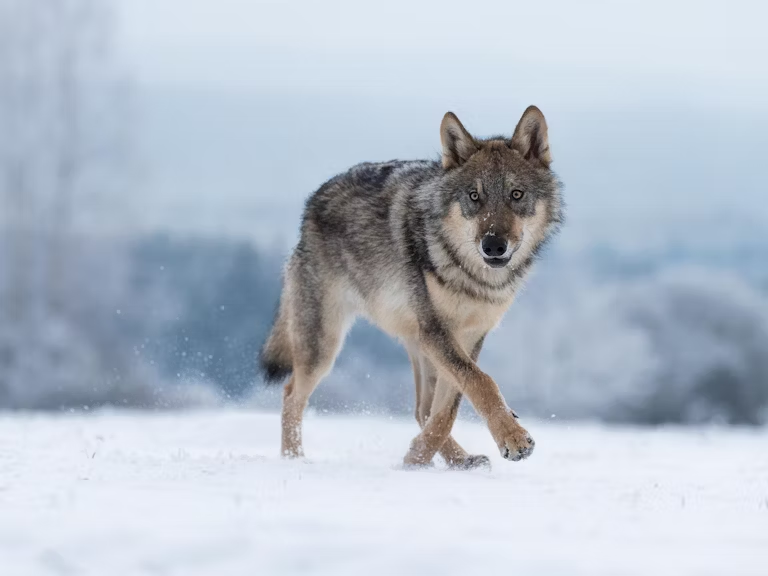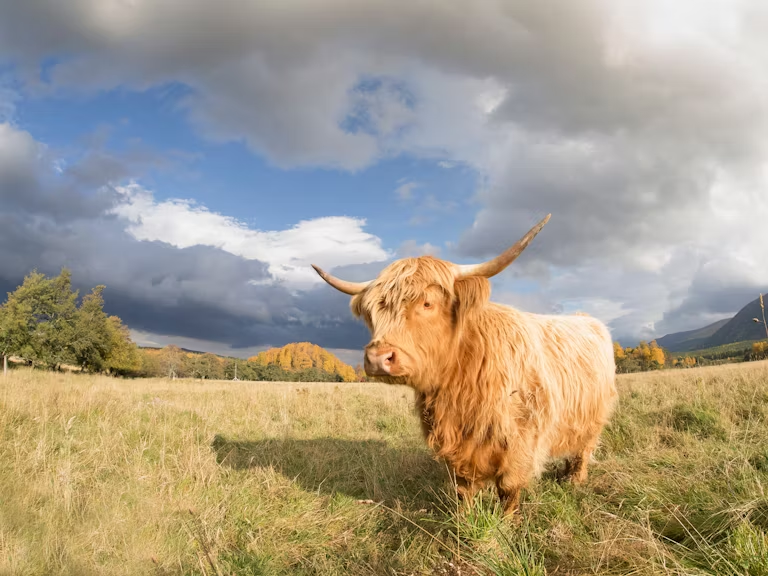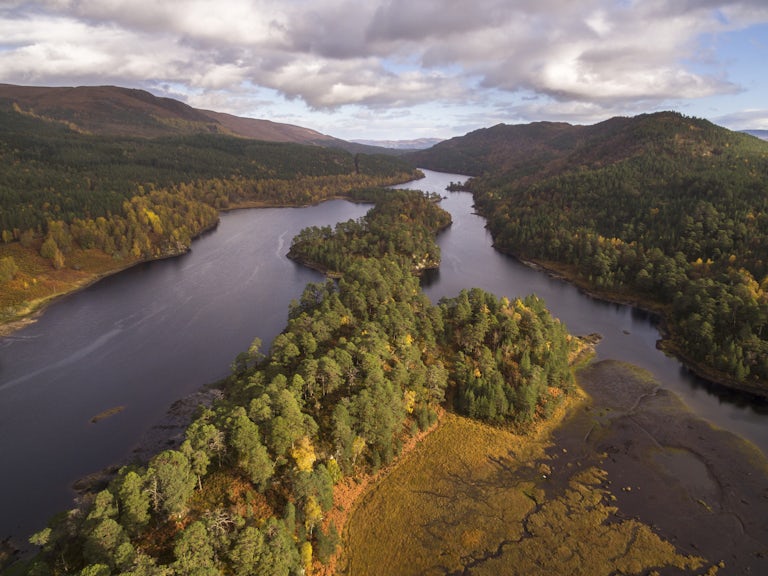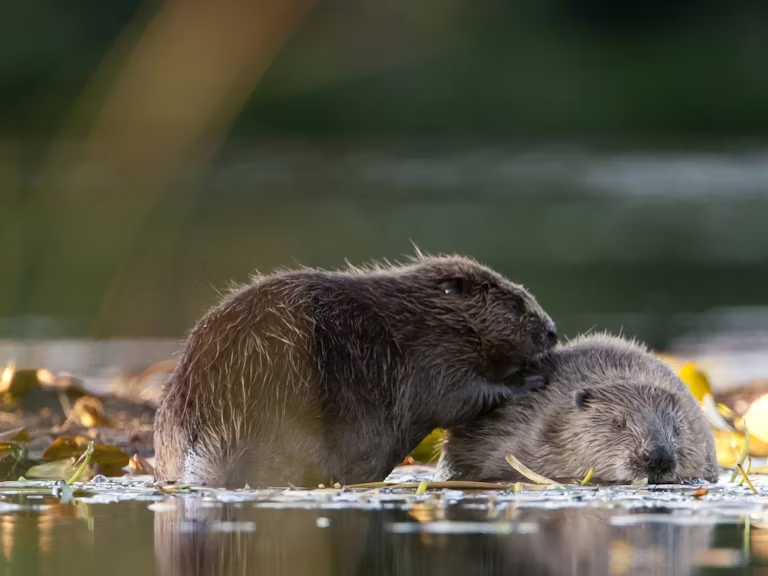Introducing natural processes
Natural processes lie at the heart of rewilding, but what on earth are they and why do we talk about them so much?
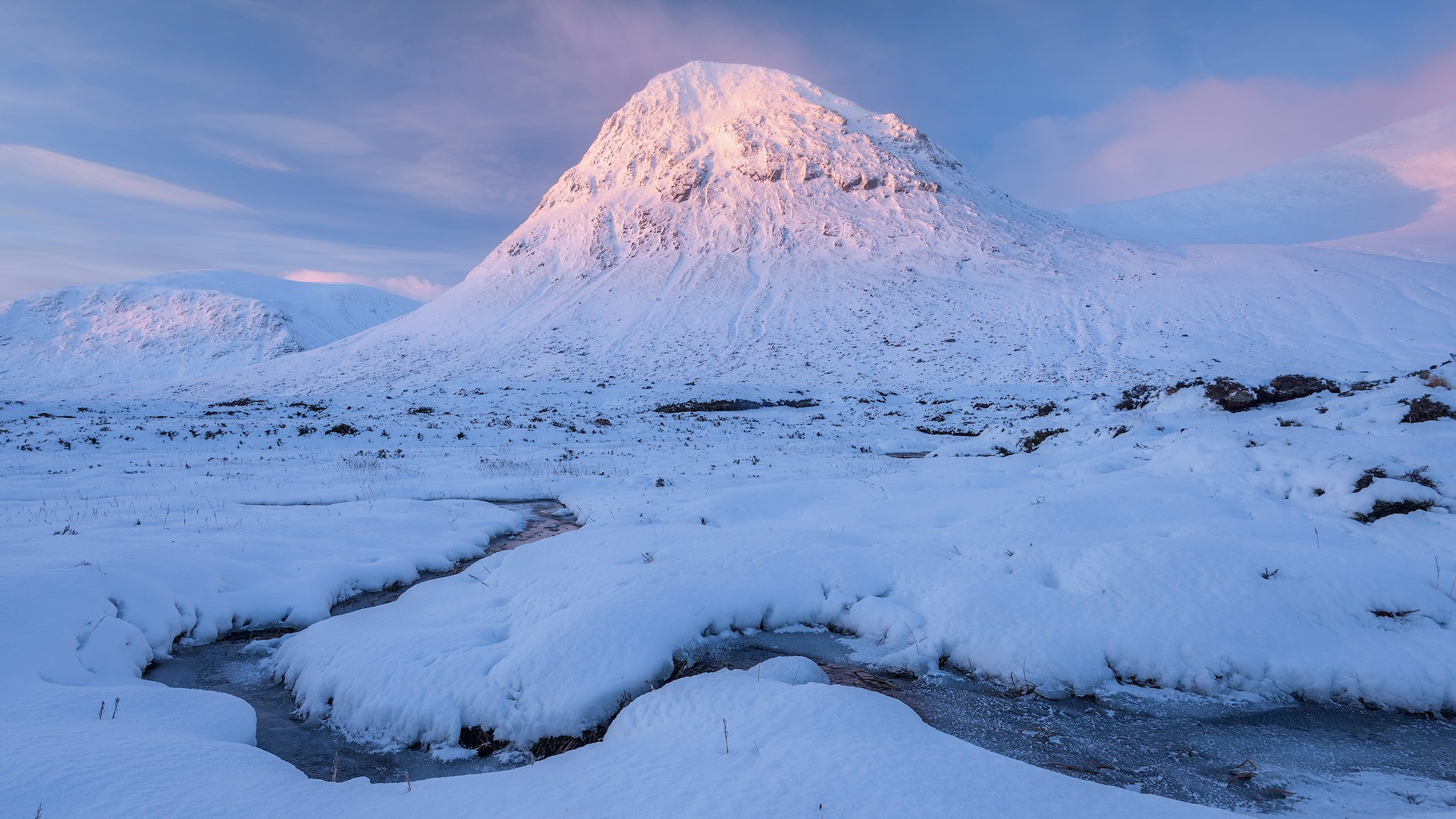
Natural processes are the endless interactions that shape our planet and support life. From the catastrophic (wildfires, volcanoes, tidal waves) to the microscopic (the formation of mycorrhizal networks), myriad natural processes take place around us every day. Some processes transform land overnight, and others take millennia to become detectable. Each leaves an individual fingerprint on our natural world. They make life happen. They are life happening.
Vital natural processes include the water cycle, oxygen production and soil formation.
Some key natural processes, for example, grazing and natural flood management, can happen on a large scale. But natural processes still happen at the garden level. When a bee or butterfly moves between the flowers on your blackberry bush or primroses, pollinating as they go, that’s an important natural process. When worms aerate the soil in your vegetable bed, that’s another key natural process.
Natural processes include:
- Seasonal change. Spring springing, autumn leaves falling, winter freezing and thawing
- Life and death. A wolf devouring an elk, an eagle scavenging a carcass
- Weather. Ground cracking in drought, seeds carried downstream during a flood, trees flattened by hurricane or struck by lightning
- Geological processes. Erosion, deposition, earthquake, isostatic uplift
Natural processes can also be driven by animal behaviour such as grazing, seasonal migrations, reactions to weather or responses to predators.
The magical web of life
Wildlife species themselves drive countless natural processes. Dead plankton and other marine life plays a crucial role in regulating the climate by storing carbon as it falls to the ocean floor. Salmon carry important nutrients from the sea up into our river systems and soils. The carcasses of animals provide food for others and enrich the earth. Collectively, the eating, breeding, dunging, swimming, flying and trampling of thousands of different species drive the creation of an extraordinary range of different natural processes, habitat types, growth stages, and habitat niches.
Entire landscapes can be changed simply by the presence or absence of a species. We call these species ‘ecosystem engineers’ and ‘keystone species’. They exert a greater influence on their surroundings than other species. Remove a keystone species, such as the wolf or beaver, and the whole of a natural system may collapse. Help an ecosystem engineer, such as mycorrhizal fungi, to thrive and it will fundamentally and positively alter its environment to benefit the whole. The fertilisation of soil when dung beetles bury their dung stash is an essential natural process.
“Rewilding is about working with nature, to get natural processes, the foundations of life, working again”
Working with nature
Humans have worked with natural processes and mimicked them since the beginning of time. In many countries, people still plant their crops after the river has flooded. They know that the soil will be more fertile after the natural process of silt and mineral deposition by swollen flood waters. When we coppice certain woodland species (chopping tree trunks close to the ground in a way that encourages them to produce new shoots) we’re mimicking the natural process or action of cows and bison that browse and tear branches, or beavers that fell them with their razor sharp teeth.
Across Britain many natural processes have been interrupted, damaged or broken by man – through the damming, straightening, widening and deepening of rivers and waterways, the burning of peatland, the draining of wetlands, the extermination of predators such as wolf and lynx, the killing and conserving of species according to our desires, the introduction of non-native species, deforestation, the replacement of broadleaf woodland with coniferous plantations and so on.
Rewilding is about working with nature, to get natural processes, the foundations of life, working again. A key principle of rewilding is acknowledging that nature may not need our intervention and that it can lead its own recovery. Nature knows what it wants, and it has evolved instinctively to its niche. If humans can recognise, restore and harness these missing or damaged natural processes again, then nature will create its own natural abundance, and ‘wilder’ wildlife by default.
Upland peat, vegetation and soils act as natural sponges. Natural vegetation, such as woodland canopies, hedges and reedbeds, help to slow the flow. Natural meandering rivers, fallen trees and leaky woody debris dams also stop water tumbling downstream in harmful ‘spatey’ torrents. And rivers and streams which are naturally connected to their floodplains help to store vast areas of water and reduce flood risk to properties downstream.
Natural processes are nearly infinite. They’re a source of wonder, abundance and impact. Learning to live with them, recognise them, respect them and restore them where we can is key to our future health and wellbeing.

Demand a wilder future for our land
Send a message to the UK Government – it’s time to put nature in the frame. It only takes two minutes.
Add your name
Our vision
We have big ambitions. Find out what we’ve set out to achieve through rewilding.
Our vision
